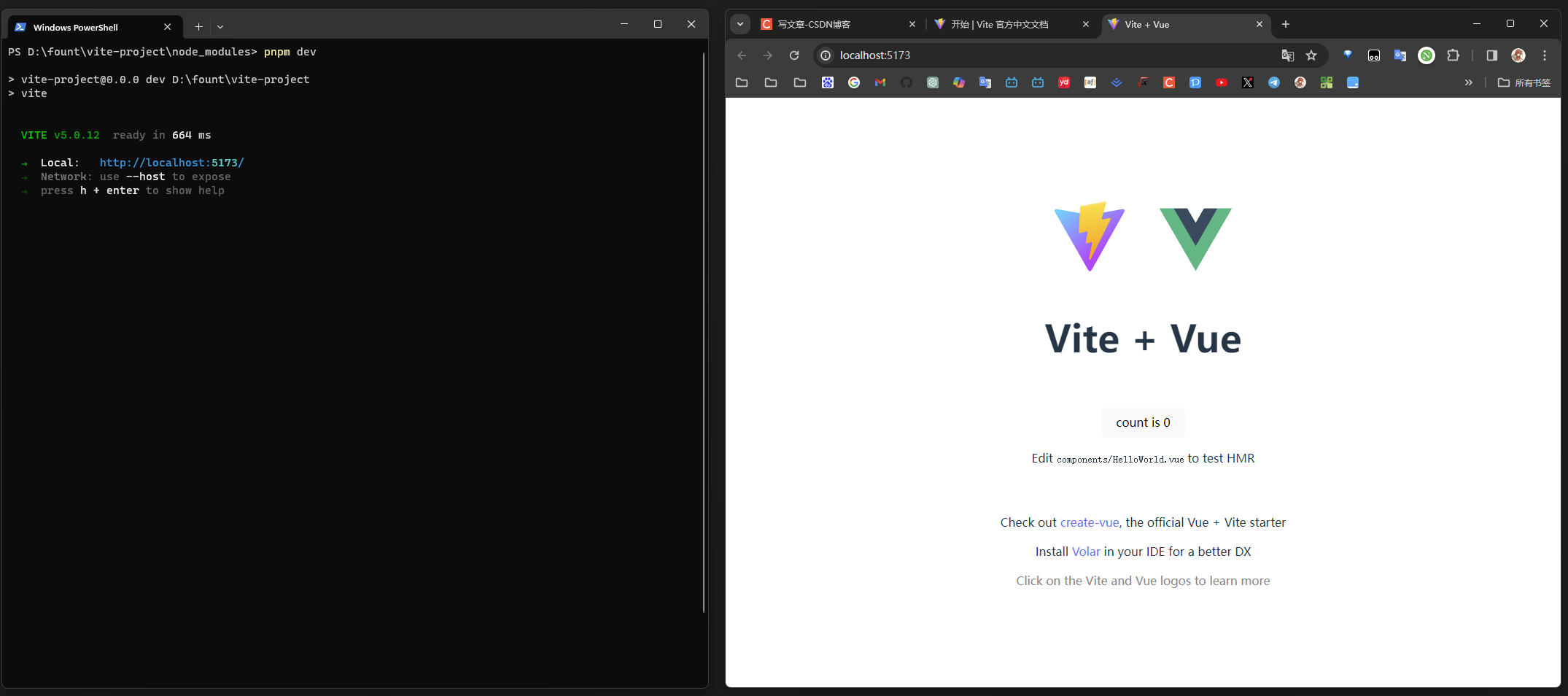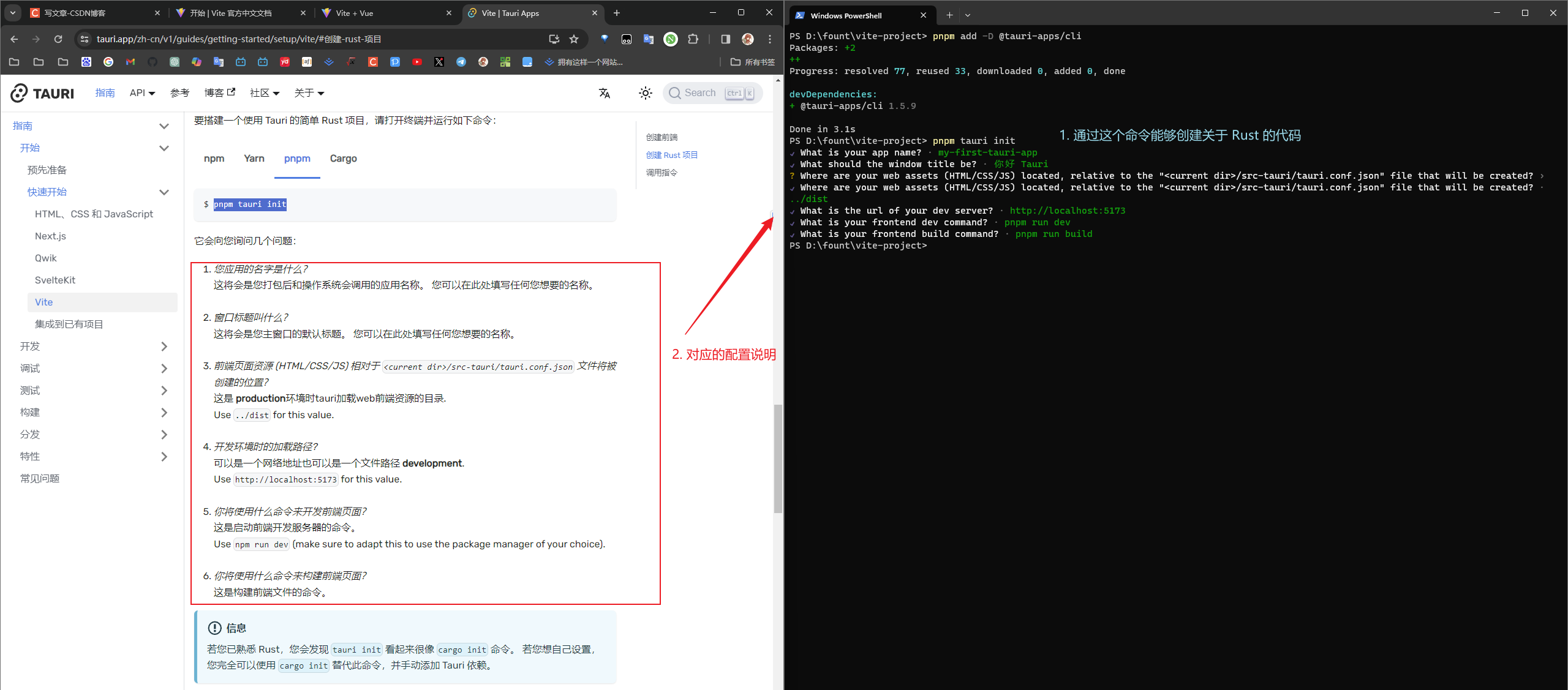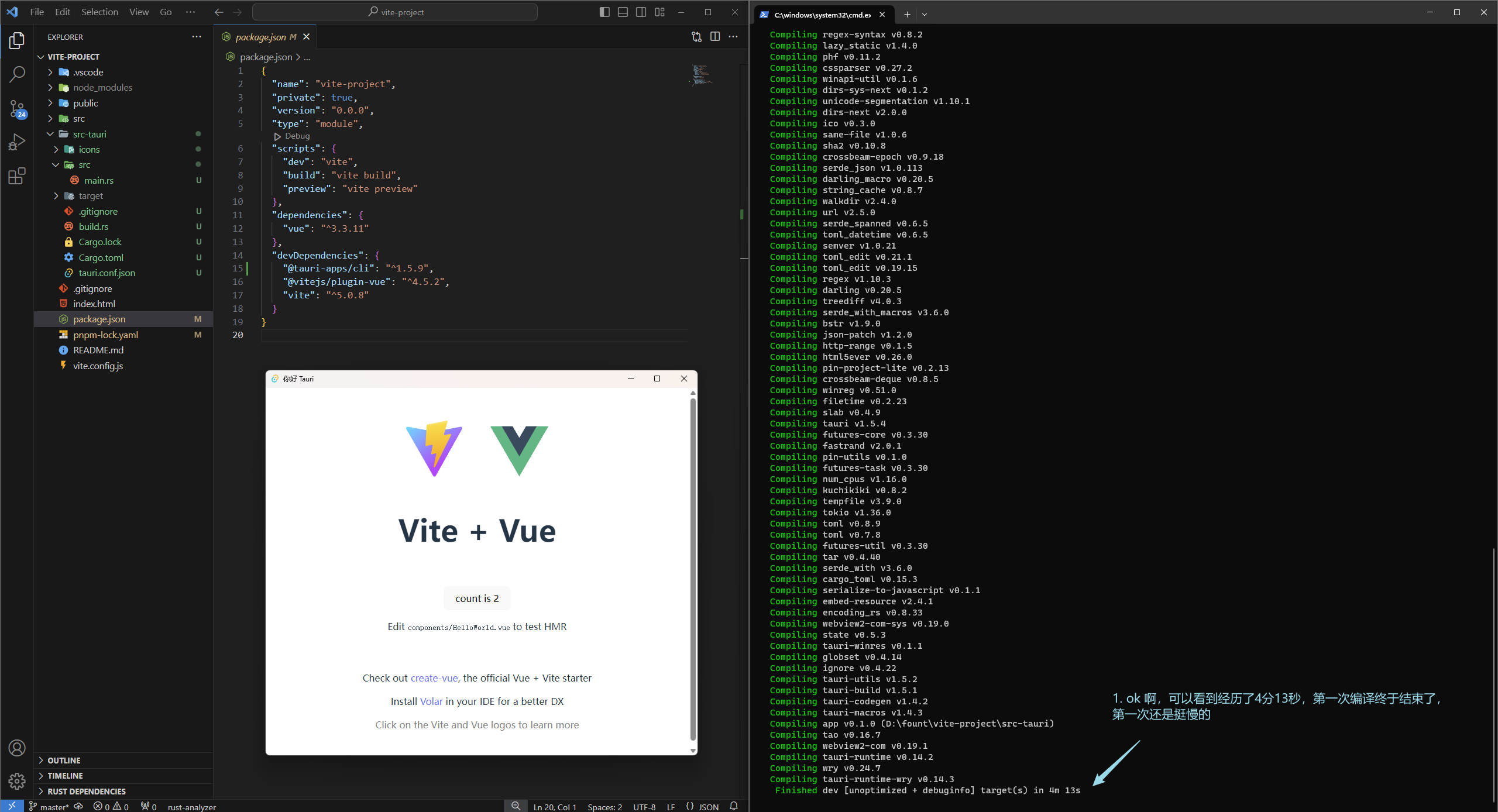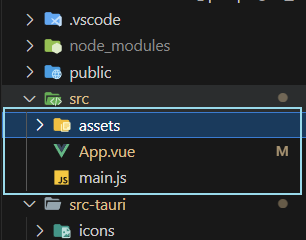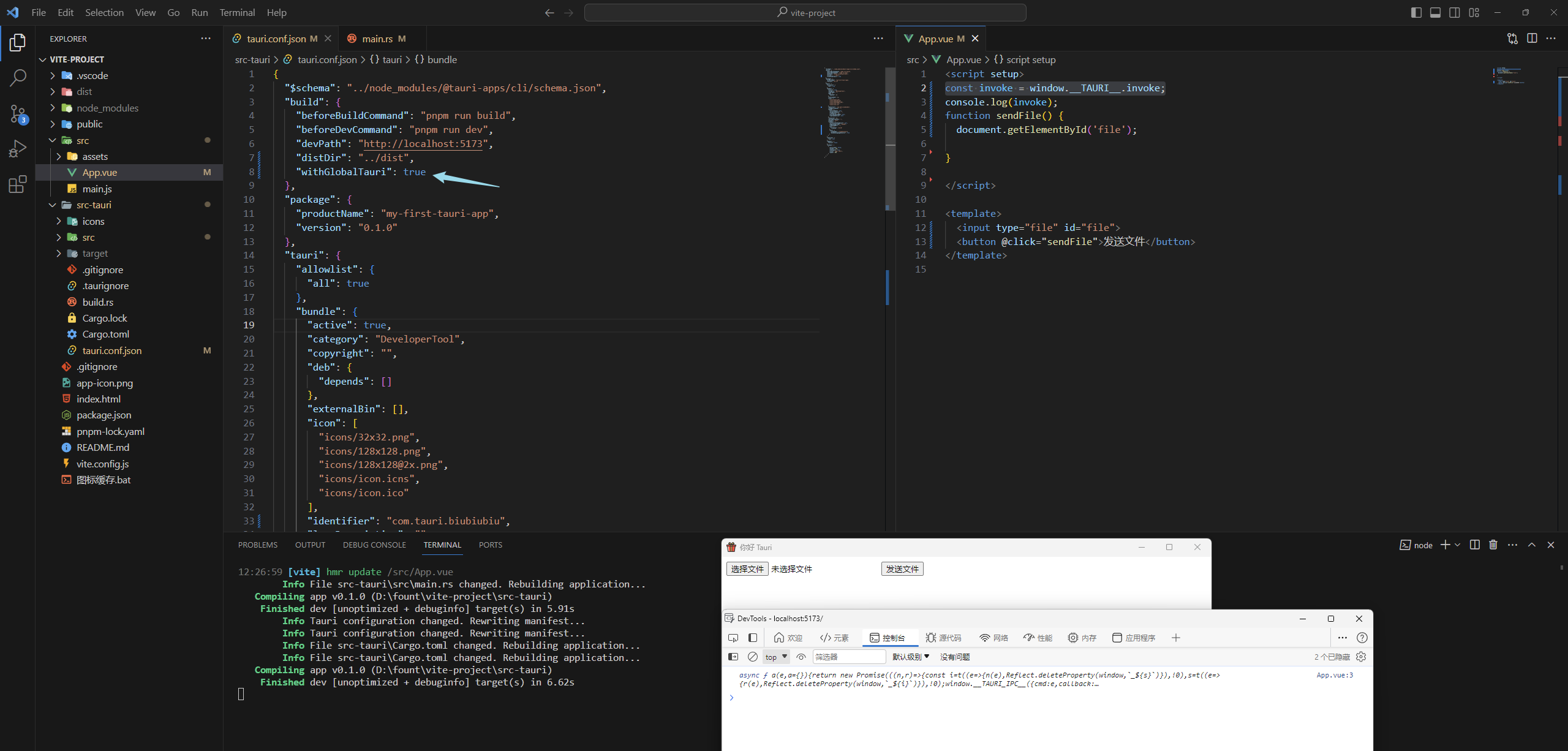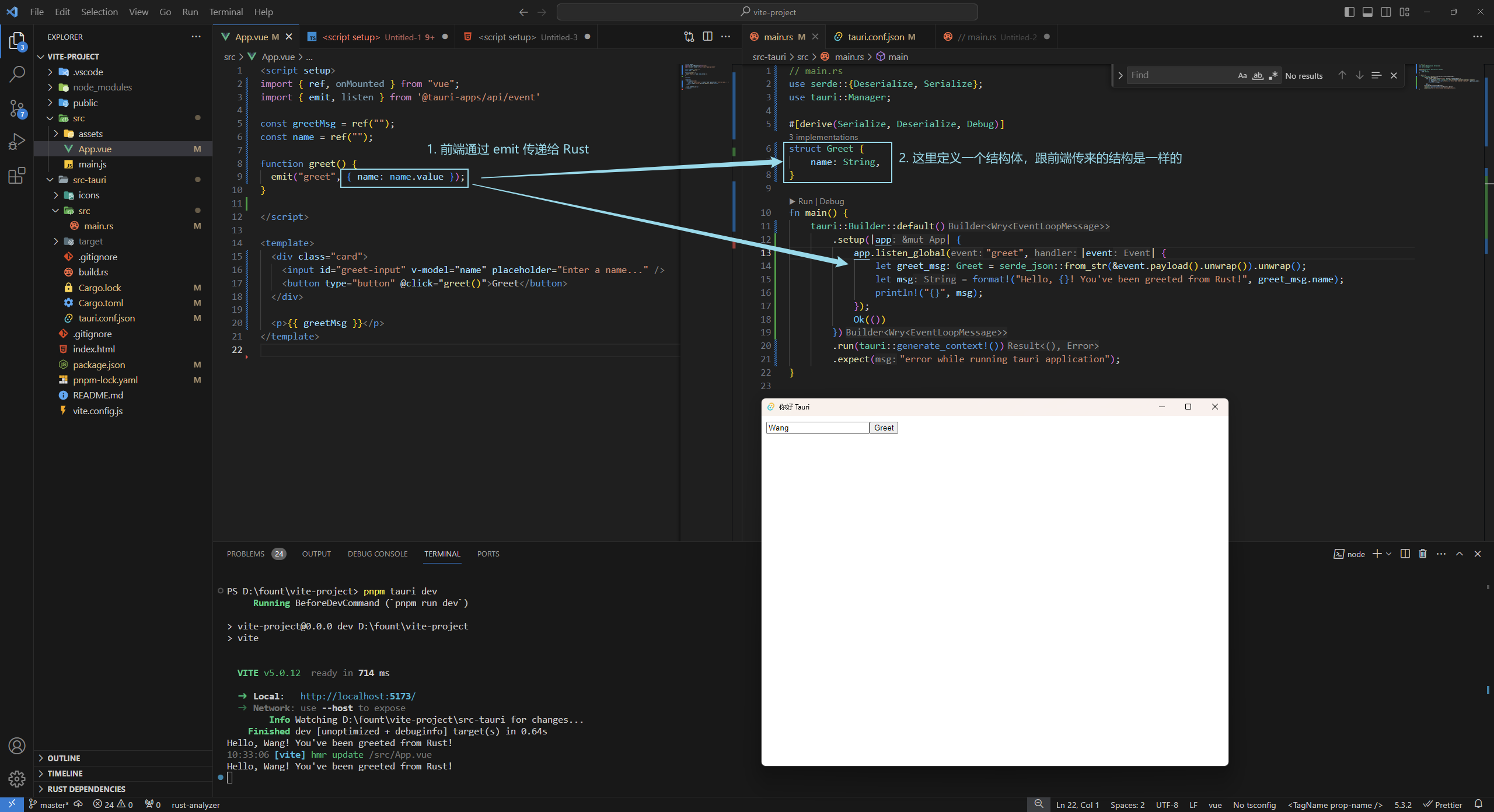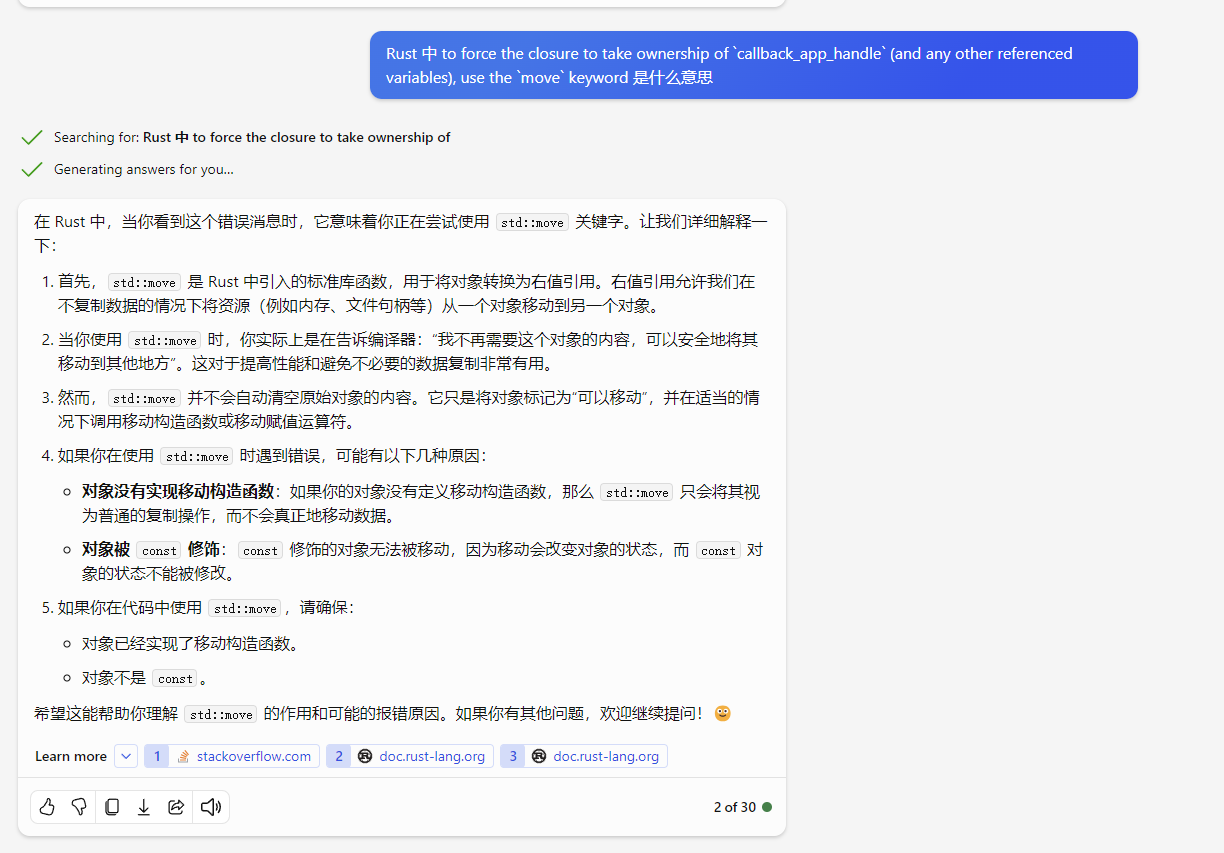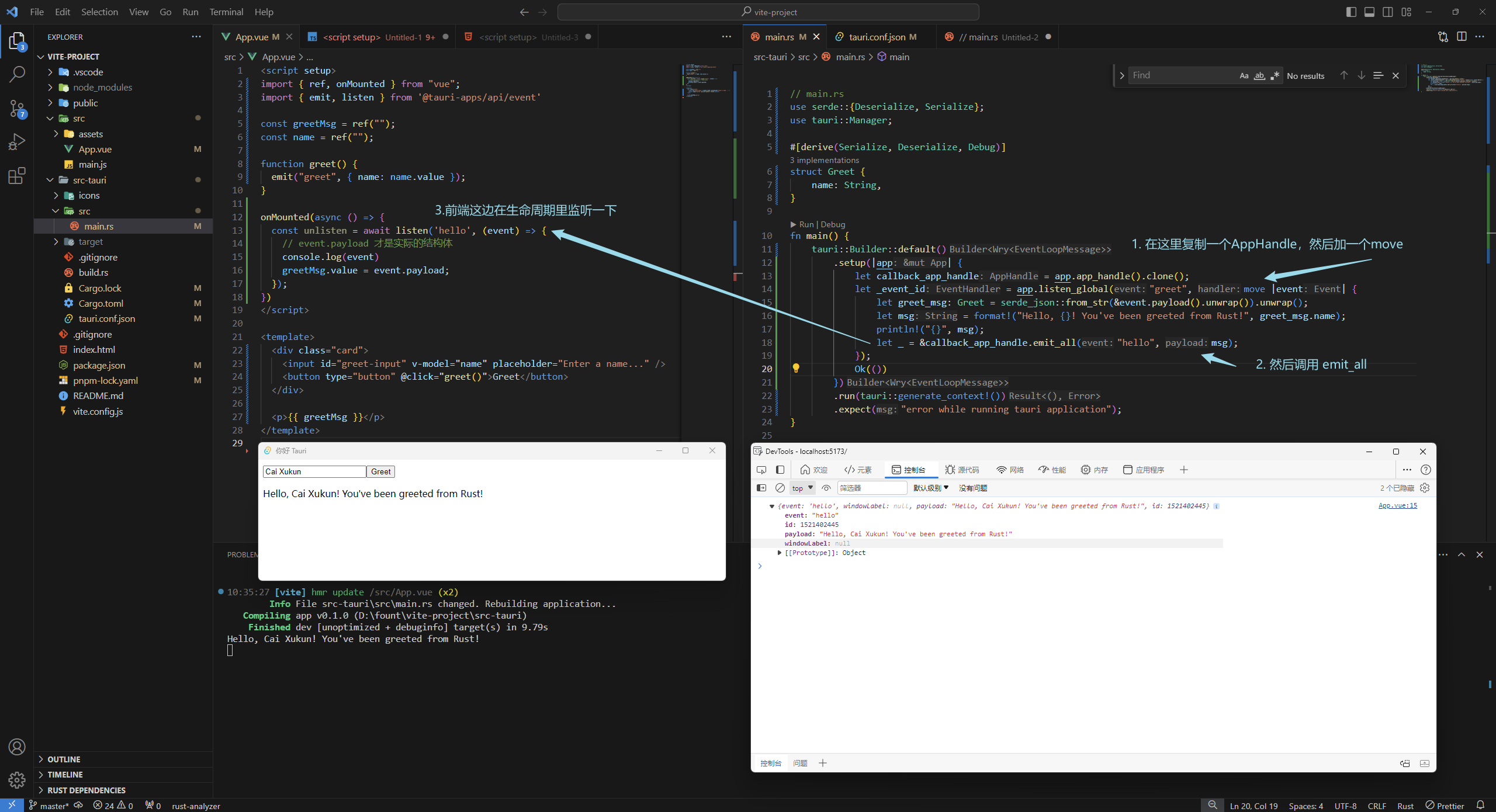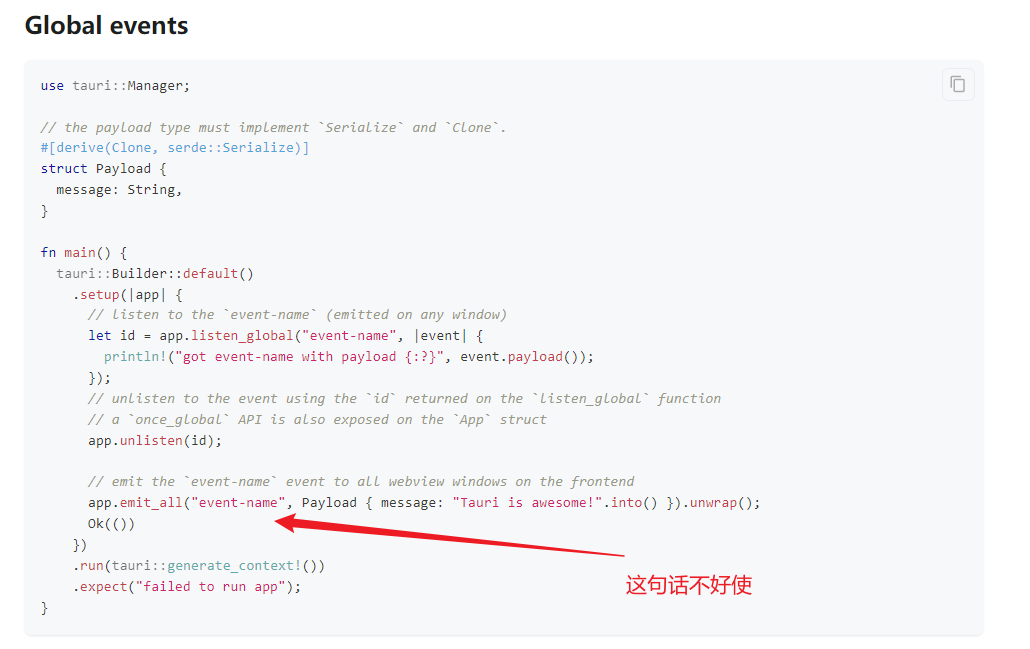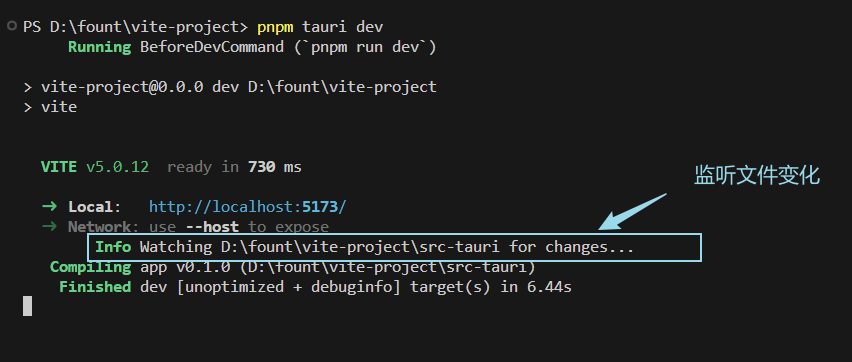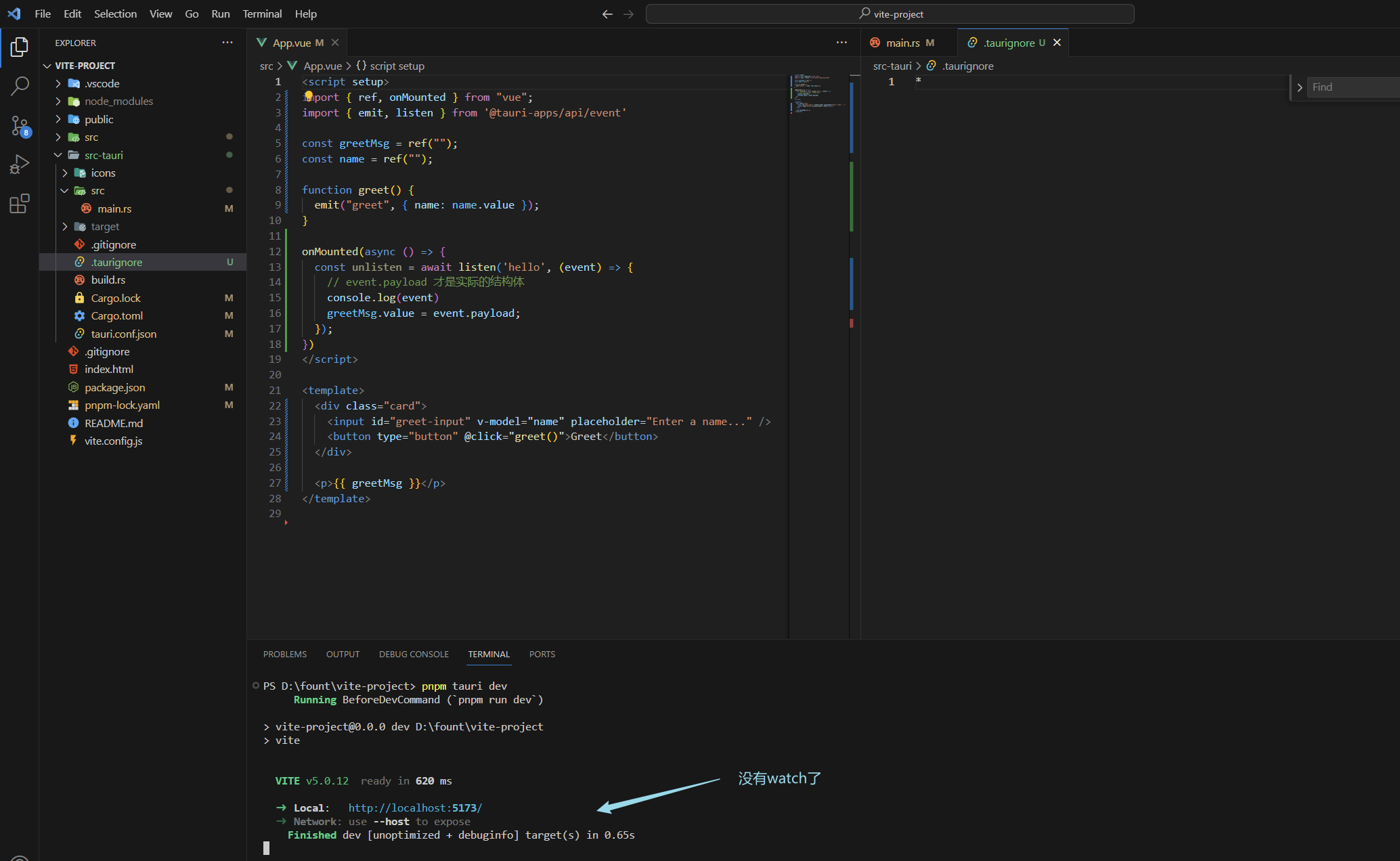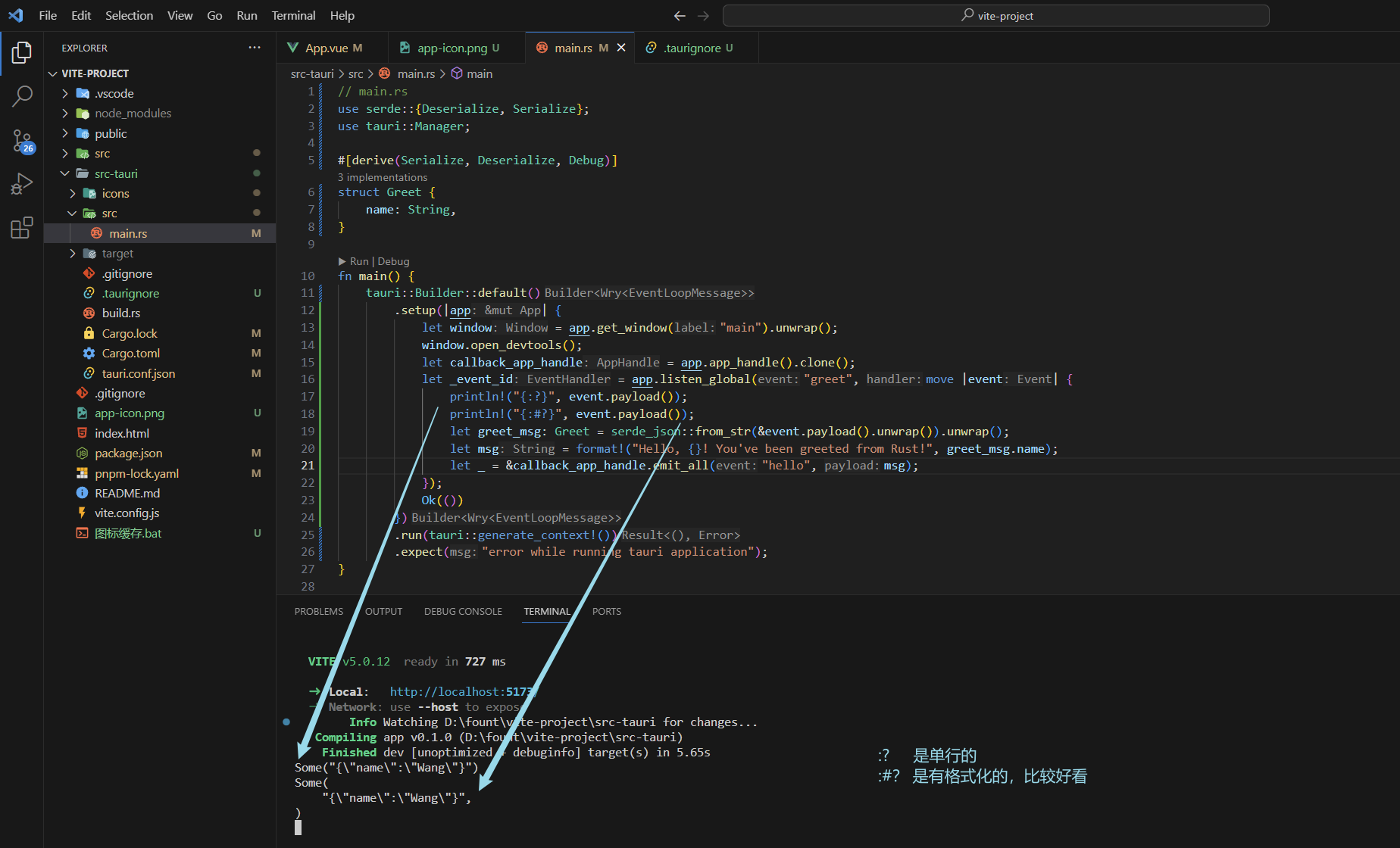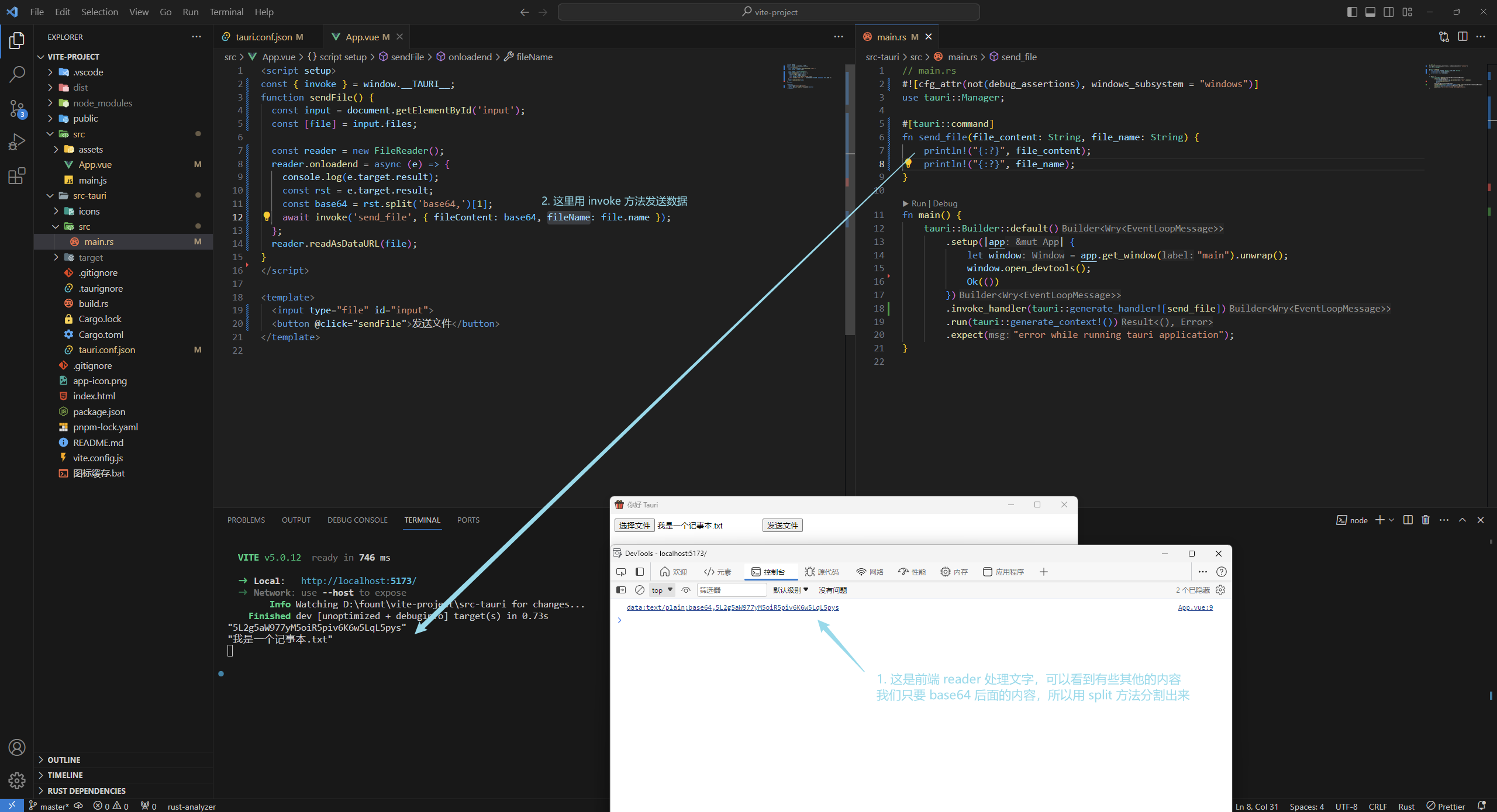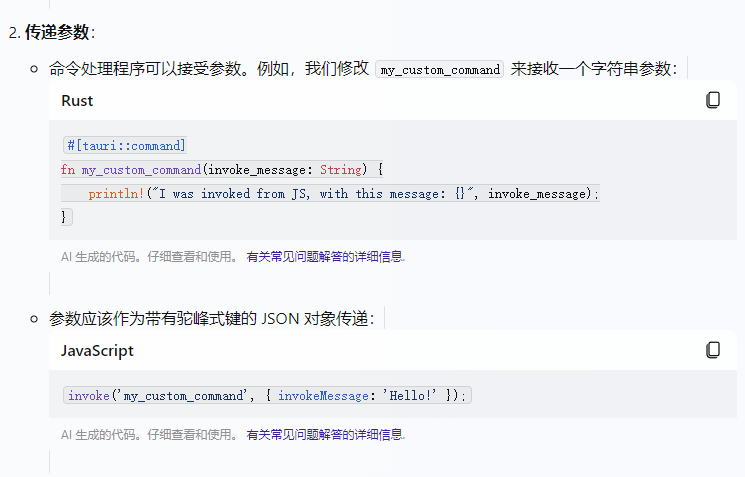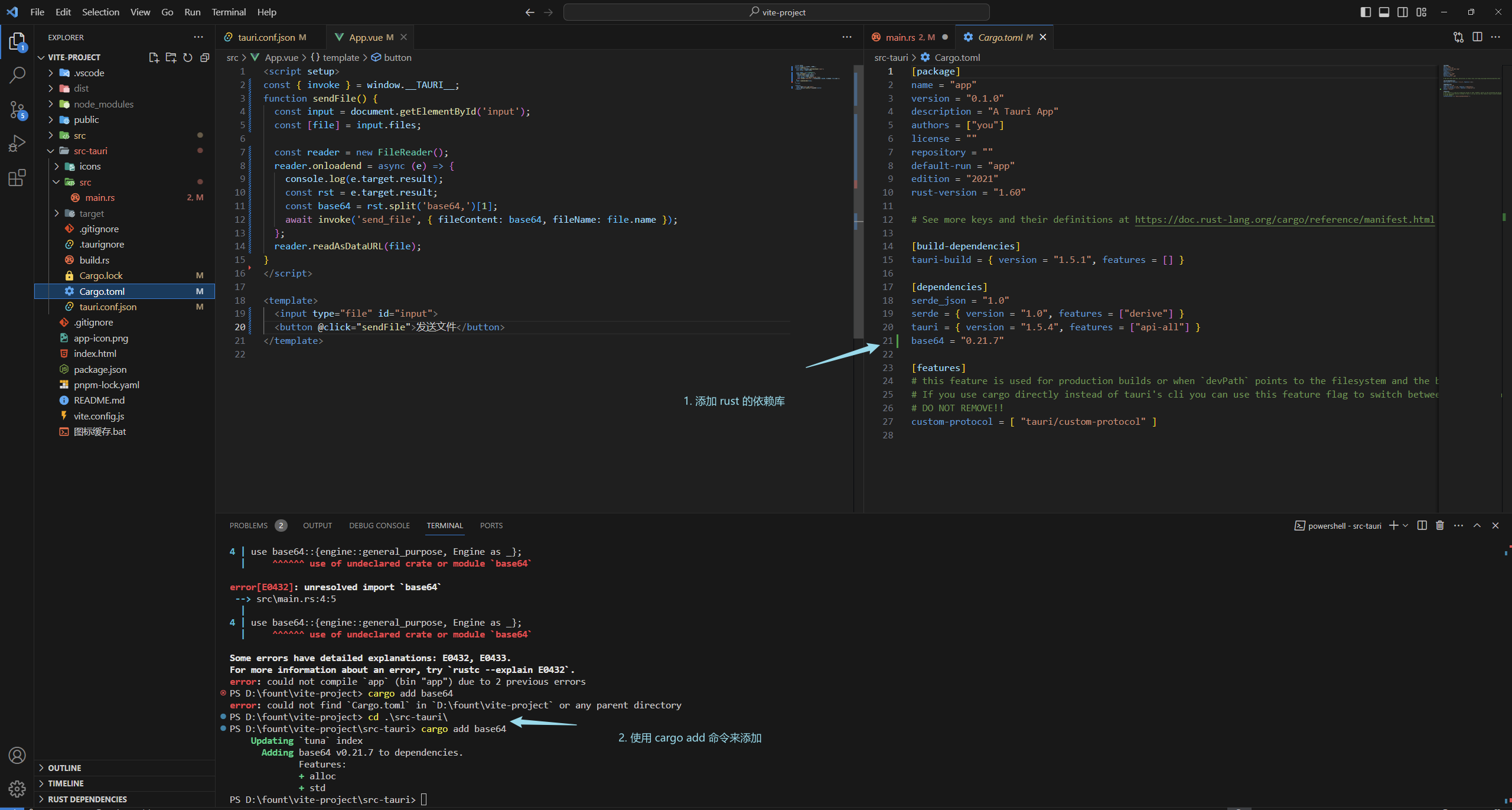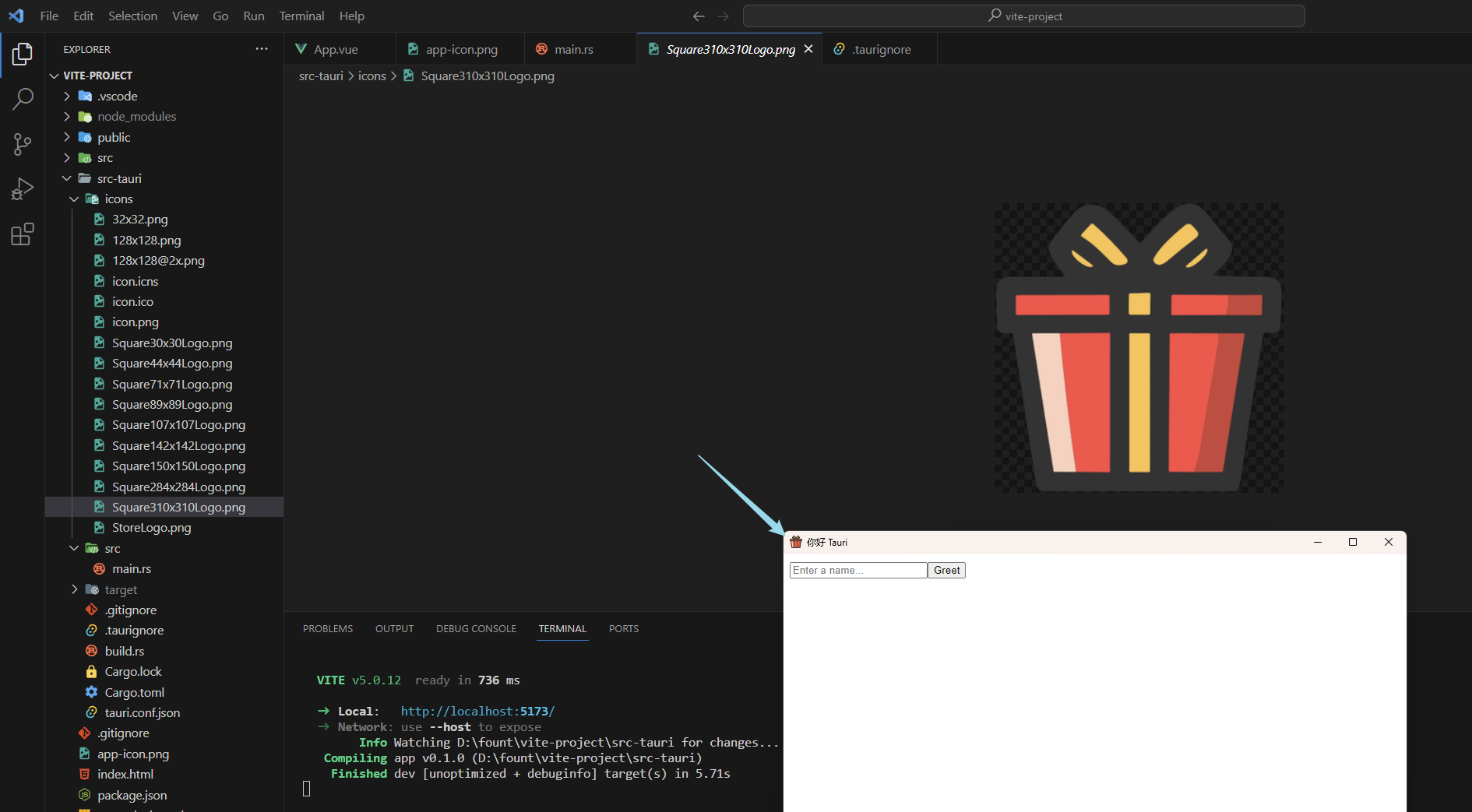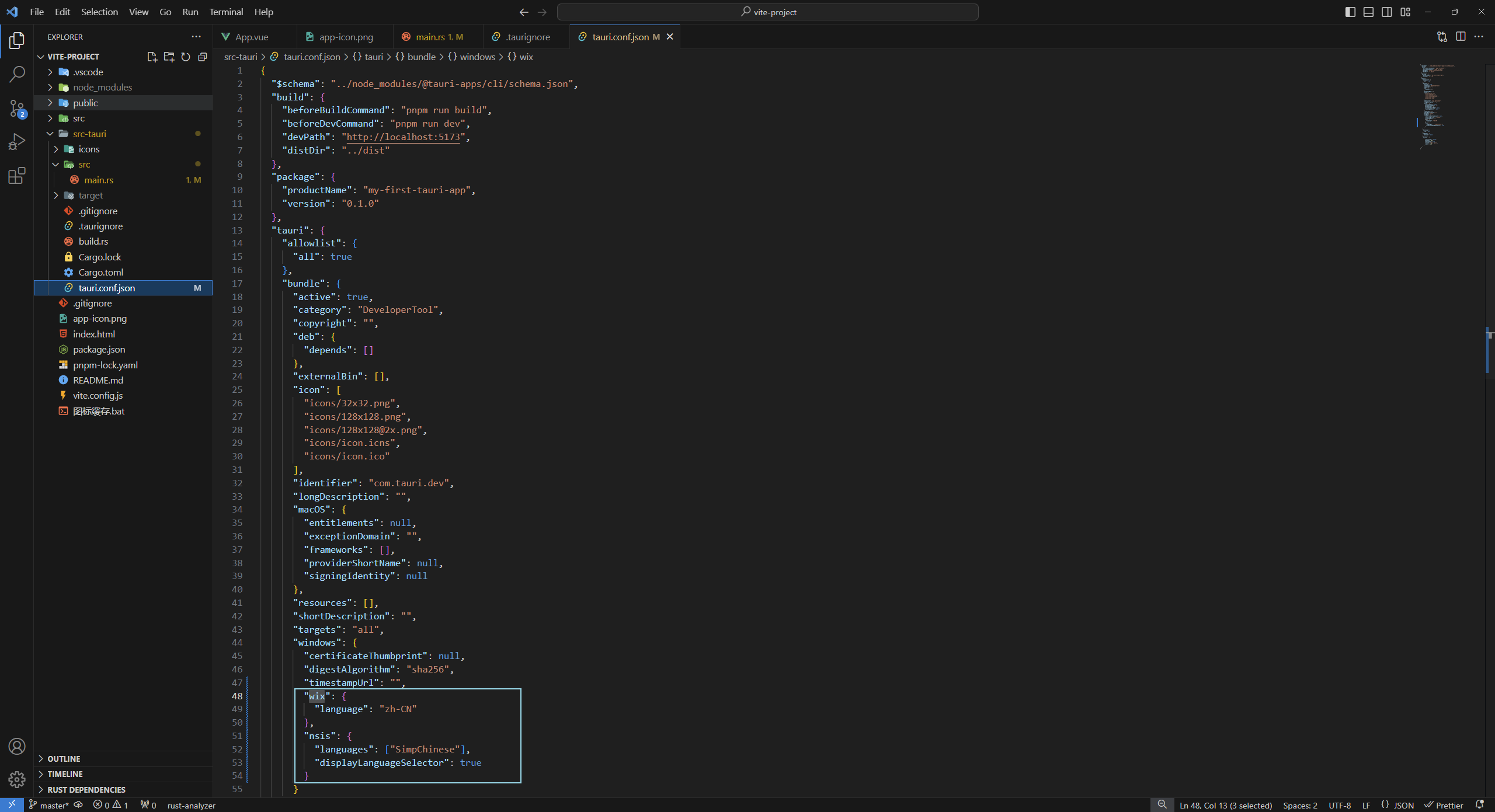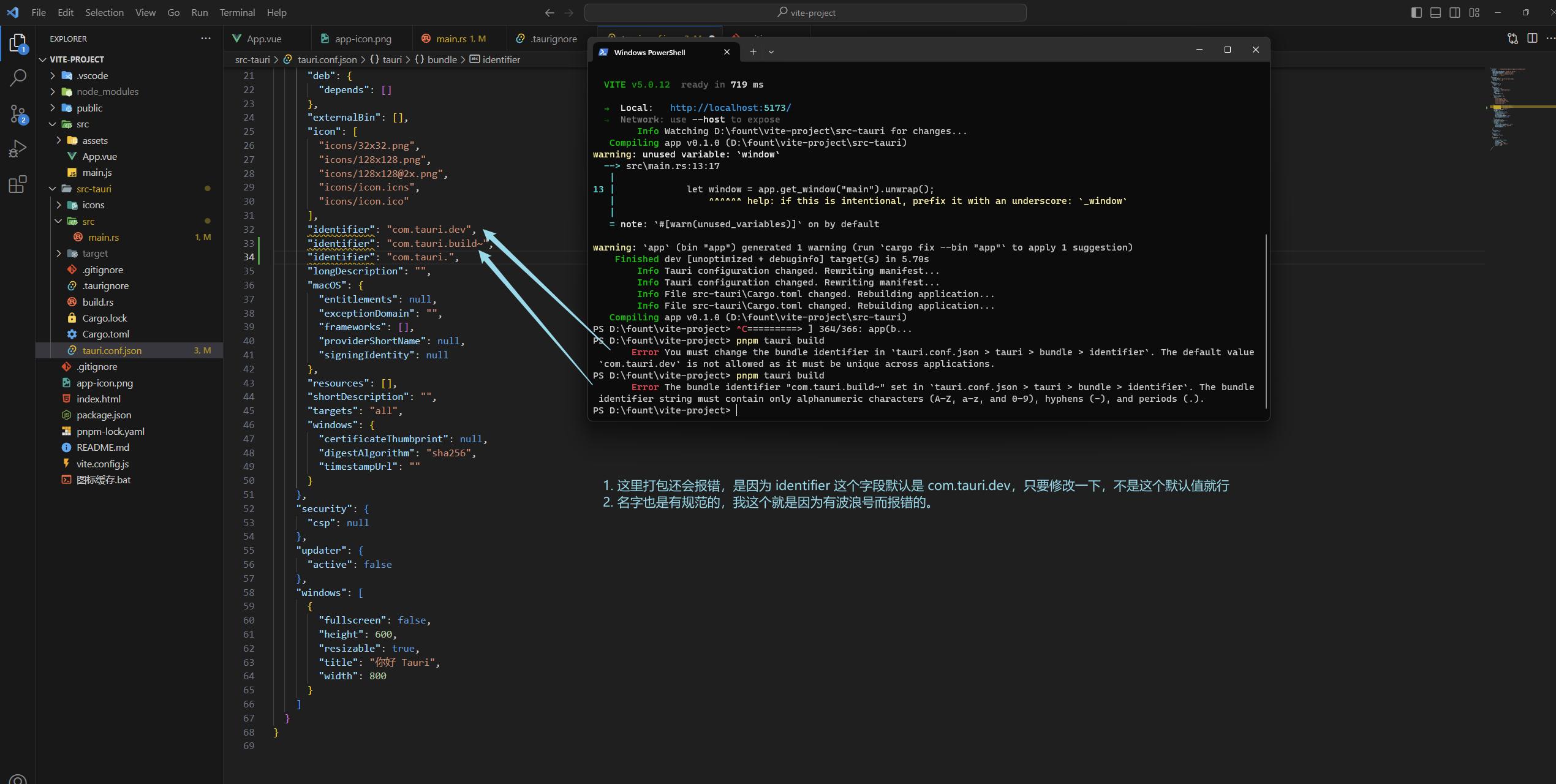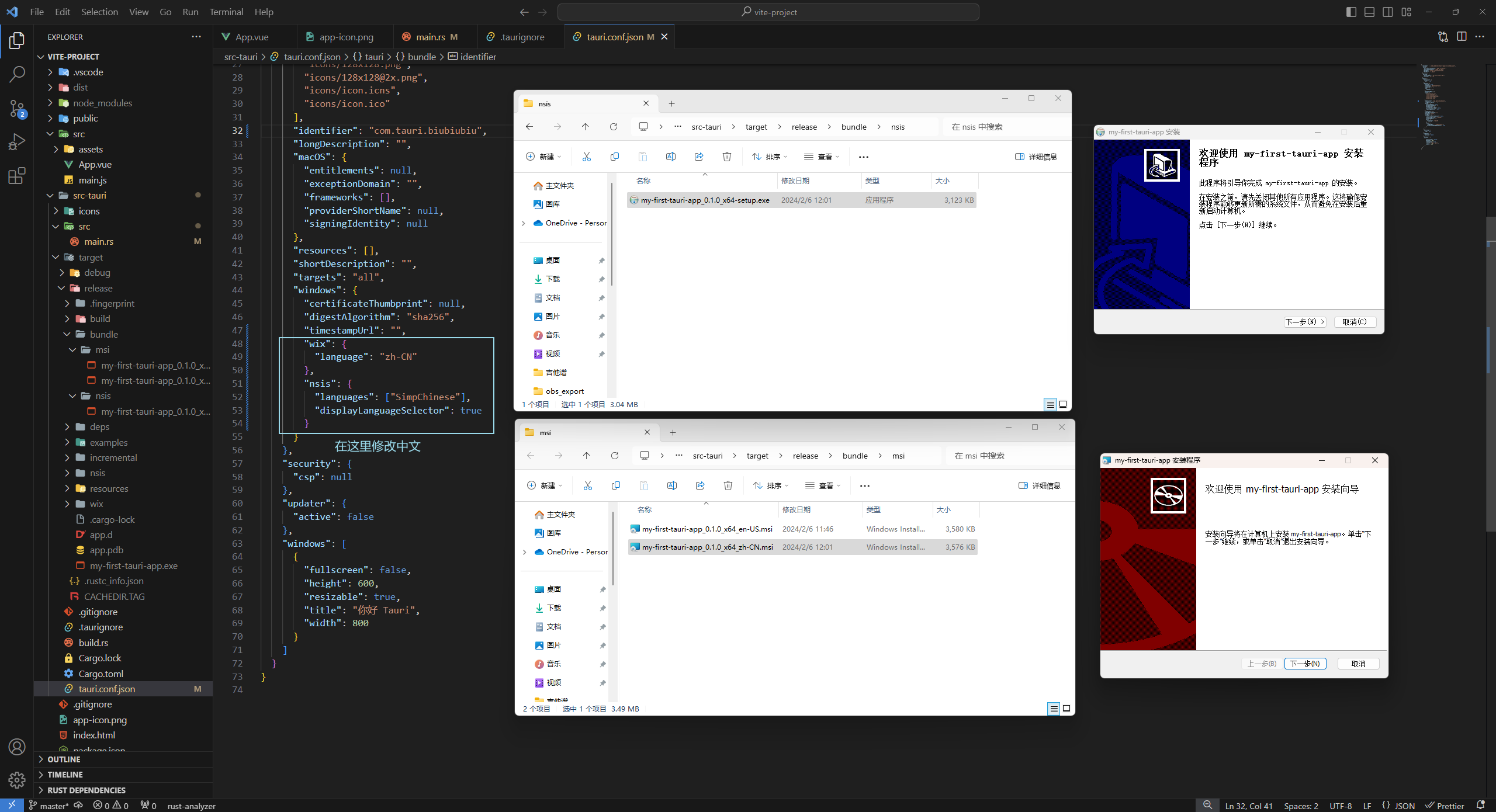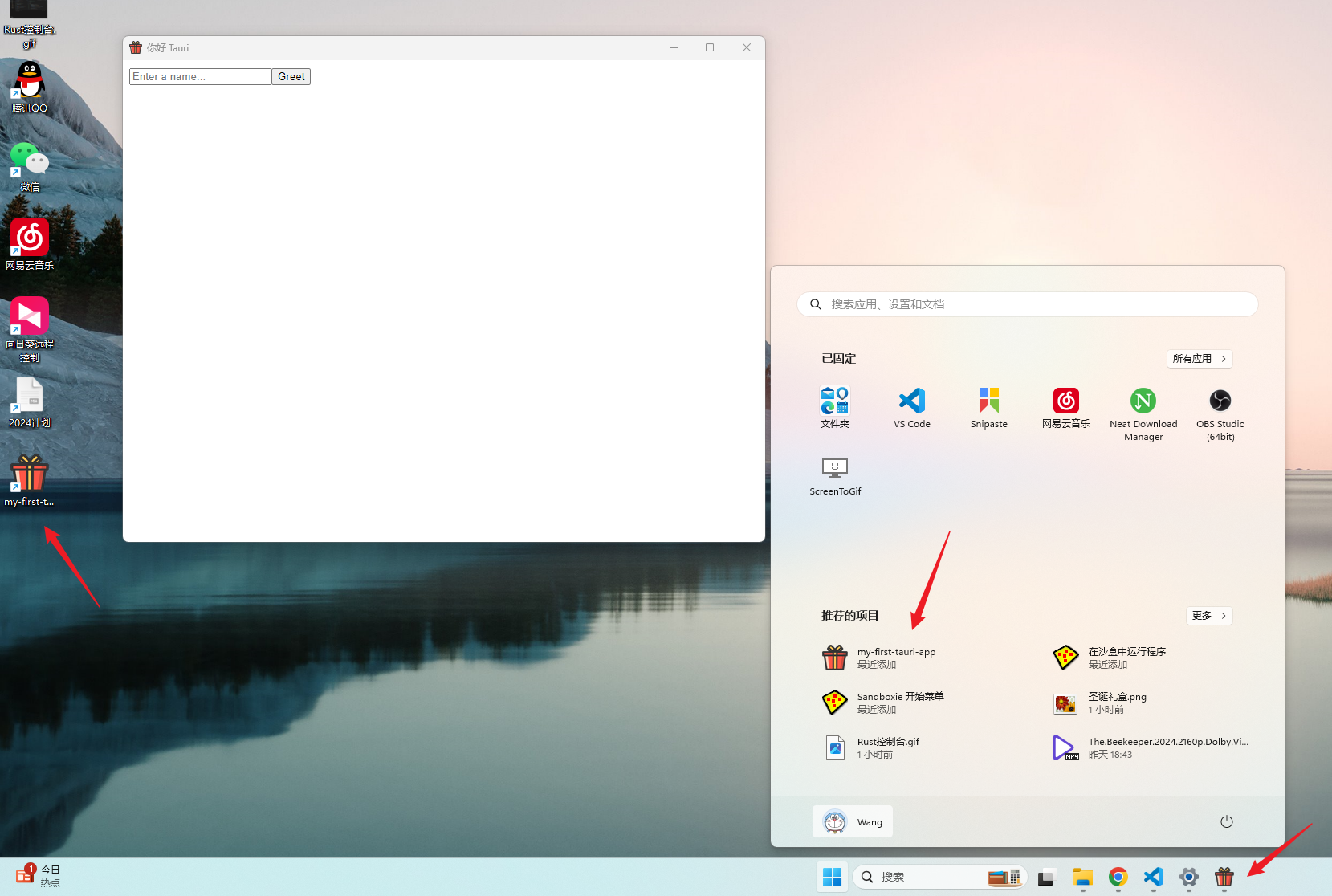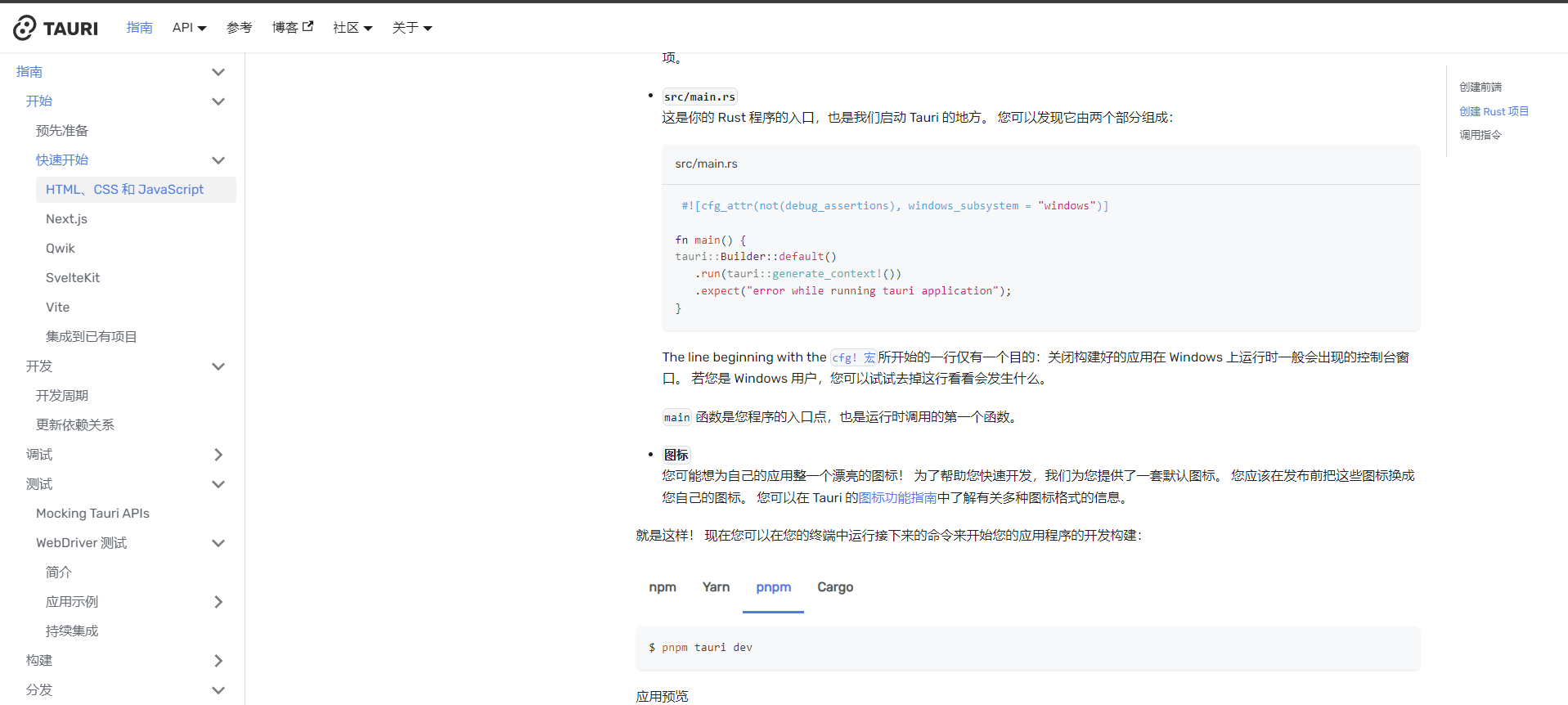前言 记录一下 Tauri 的基本操作
如何将 Tauri 集成到前端项目? 我们先创建一个普通的前端项目,这里我用 Vite + Vue3 创建一个空项目
然后启动检查一下,没啥问题:
之后引入 Tauri 的脚手架,我们可以看一下官网的说明
1 pnpm add -D @tauri-apps/cli
pnpm tauri init ,通过脚手架 init 一些配置
导入之后可以看一下代码结构,新增了 src-tauri 文件夹!
然后 pnpm tauri dev 启动一下,可以看到我启动花了四分钟,真的是挺慢的了,不过还是启动了!!
这里插一嘴,如果卡 blocking 的话,稍微等一下吧,太久了就检查一下代理,然后重复上述步骤
进程间通信(命令) 前端如何调用 Rust 指令呢?
我们把前端精简一下,就剩一个组件,然后写一个按钮,用来触发命令
想要前端调用 Rust,还需要安装一个 @tauri-apps/api,具体可以看 官网:调用指令 ,安装完运行 tauri dev
Rust 的代码
const invoke = window.TAURI .invoke; 这里的 invoke 也可以挂载到 window 上,只需要在 tauri.conf.json 中配置一下,默认是 false
进程间通信(事件) 官网上也有基于事件的进程间通信(非命令) ,不过我感觉命令的使用场景会多一些吧,更像是前后端通信
事件的话,感兴趣的话可以看看,这里简单使用一下
前端 ⇒ Rust 这里前端使用 emit() 传递,Rust 用 app.listen_global 接收
Rust ⇒ 前端 这里用了一下克隆
1 let callback_app_handle = app.app_handle ().clone ();
以及 move 关键字,如果不用move 的话会报错,这里问了一下 GPT 的回答:
还有 JSON 的转化,整体代码如下
整体的代码放到文章下面了
我的疑问 官网上给的例子,Rust 传递到前端没跑通,不知道是什么原因…点我跳转到官网的例子
我本来想的是 Rust 启动之后立马发消息给前端,但是实现不出来
给我的感觉像是时机的问题,可能是前端监听的晚了…用点击事件就能触发
开发时的一些技巧 用代码打开前端的开发者工具 每次启动的时候,前端控制台默认是不打开的,每次修改 Rust 之后,窗口都会重新启动,并且不会打开控制台,调试的话很麻烦
那么让代码帮我们打开控制台
1 2 let window = app.get_window ("main" ).unwrap ();window.open_devtools ();
让 Tauri 不要监听文件 Rust 启动会监听 src-tauri 下的文件变化,如果有变化,就会重新编译,重启窗口,有时候并不希望这样
那我们可以在src-tauri 文件夹下新建 .taurignore 文件,然后输入 * 保存,这就代表所有文件的变化都不监听了
Rust 格式化输出 Rust 中如何像前端一样 console.log() 一些变量呢?
1 2 println! ("{:?}" , 变量);println! ("{:#?}" , 变量);
Rust 读写文件 因为 Rust 的基础数据类型比较少,所以这里我用 String 来传递文件,就是先将文件转换成 Base64 ,然后传给 Rust 来处理。
可以看到Rust 中的变量自动帮我们解包了,并且还是小写加下划线的形式,为什么这么设计呢,不理解,看一下GPT怎么说的吧
没关系,反正会如何使用就行
我们拿到 base64 之后就可以写文件了
接着我们写一下 Rust,需要导入一些模块,可以看到下面的 base64 飘红了
需要 cd 到 src-tauri 里然后,用 cargo add base64 命令安装模块
src-tauri 目录下了
这就是一个简单的文件读写
1 2 3 4 5 6 7 8 9 10 11 12 13 14 15 16 17 18 19 20 21 22 <script setup> const { invoke } = window .__TAURI__ ;function sendFile ( const input = document .getElementById ('input' ); const [file] = input.files ; const reader = new FileReader (); reader.onloadend = async (e) => { console .log (e.target .result ); const rst = e.target .result ; const base64 = rst.split ('base64,' )[1 ]; await invoke ('send_file' , { fileContent : base64, fileName : file.name }); }; reader.readAsDataURL (file); } </script> <template > <input type ="file" id ="input" > <button @click ="sendFile" > 发送文件</button > </template >
1 2 3 4 5 6 7 8 9 10 11 12 13 14 15 16 17 18 19 20 21 22 23 24 25 26 27 28 29 #![cfg_attr(not(debug_assertions), windows_subsystem = "windows" )] use tauri::Manager;use base64::{engine::general_purpose, Engine as _};use std::fs::File;use std::io::Write;#[tauri::command] fn send_file (file_content: String , file_name: String ) { println! ("{:?}" , file_content); println! ("{:?}" , file_name); let file_bytes = general_purpose::STANDARD.decode (file_content).unwrap (); let mut file = File::create (file_name).expect ("创建文件失败" ); file.write_all (&file_bytes).expect ("写入文件失败" ); } fn main () { tauri::Builder::default () .setup (|app| { let window = app.get_window ("main" ).unwrap (); window.open_devtools (); Ok (()) }) .invoke_handler (tauri::generate_handler![send_file]) .run (tauri::generate_context!()) .expect ("error while running tauri application" ); }
Rust 推荐教程 b站杨哥的视频,教程比较干净,适合速学
生成应用图标 Tauri 可以通过命令来生成各种尺寸的图标
我们现在网上找一个尺寸比较大的,可以去 iconfont 上面找
然后放到项目根目录下,执行命令 pnpm tauri icon
Windows 重建图标缓存 把下面的代码复制到 txt 中,然后修改为 bat 执行文件,然后执行
1 2 3 4 5 6 7 8 9 10 11 12 13 14 15 16 17 18 19 20 21 22 23 24 25 26 27 28 taskkill /f /im explorer.exeattrib -h -s -r "%userprofile% \AppData\Local\IconCache.db"del /f "%userprofile% \AppData\Local\IconCache.db"attrib /s /d -h -s -r "%userprofile% \AppData\Local\Microsoft\Windows\Explorer\*"del /f "%userprofile% \AppData\Local\Microsoft\Windows\Explorer\thumbcache_32.db"del /f "%userprofile% \AppData\Local\Microsoft\Windows\Explorer\thumbcache_96.db"del /f "%userprofile% \AppData\Local\Microsoft\Windows\Explorer\thumbcache_102.db"del /f "%userprofile% \AppData\Local\Microsoft\Windows\Explorer\thumbcache_256.db"del /f "%userprofile% \AppData\Local\Microsoft\Windows\Explorer\thumbcache_1024.db"del /f "%userprofile% \AppData\Local\Microsoft\Windows\Explorer\thumbcache_idx.db"del /f "%userprofile% \AppData\Local\Microsoft\Windows\Explorer\thumbcache_sr.db"echo y|reg delete "HKEY_CLASSES_ROOT\Local Settings\Software\Microsoft\Windows\CurrentVersion\TrayNotify" /v IconStreamsecho y|reg delete "HKEY_CLASSES_ROOT\Local Settings\Software\Microsoft\Windows\CurrentVersion\TrayNotify" /v PastIconsStreamstart explorer
生效的截图如下:
修改安装包的语言 默认是英语, 安装包默认是是两种方式,Wix 和 NSIS
我们在 tauri.conf.json 中声明打包语言,注意:路径是 tauri.bundle.windows,windows 好几个位置都有,别找错了
1 2 3 4 5 6 7 "wix" : { "language" : "zh-CN" } , "nsis" : { "languages" : [ "SimpChinese" ] , "displayLanguageSelector" : true }
两种打包方式的区别 因为我做的工具需要文件处理,Wix 打包后的应用需要管理员权限才能拿到文件,所以我更倾向于 NSIS 的安装包
第一次打包会有些慢,等一等就好了
打包后的应用打开会弹出命令行窗口 这是官网的解释
代码 进程间通信 1 2 3 4 5 6 7 8 9 10 11 12 13 14 15 16 17 18 19 20 21 22 23 24 25 26 27 28 29 30 <script setup> import { ref, onMounted } from "vue" ;import { emit, listen } from '@tauri-apps/api/event' const greetMsg = ref ("" );const name = ref ("" );function greet ( emit ("greet" , { name : name.value }); } onMounted (async () => { const unlisten = await listen ('hello' , (event ) => { console .log (event) greetMsg.value = event.payload ; }); }) </script> <template > <div class ="card" > <input id ="greet-input" v-model ="name" placeholder ="Enter a name..." /> <button type ="button" @click ="greet()" > Greet</button > </div > <p > {{ greetMsg }}</p > </template >
1 2 3 4 5 6 7 8 9 10 11 12 13 14 15 16 17 18 19 20 21 22 23 24 use serde::{Deserialize, Serialize};use tauri::Manager;#[derive(Serialize, Deserialize, Debug)] struct Greet { name: String , } fn main () { tauri::Builder::default () .setup (|app| { let callback_app_handle = app.app_handle ().clone (); let _event_id = app.listen_global ("greet" , move |event| { let greet_msg : Greet = serde_json::from_str (&event.payload ().unwrap ()).unwrap (); let msg = format! ("Hello, {}! You've been greeted from Rust!" , greet_msg.name); println! ("{}" , msg); let _ = &callback_app_handle.emit_all ("hello" , msg); }); Ok (()) }) .run (tauri::generate_context!()) .expect ("error while running tauri application" ); }

